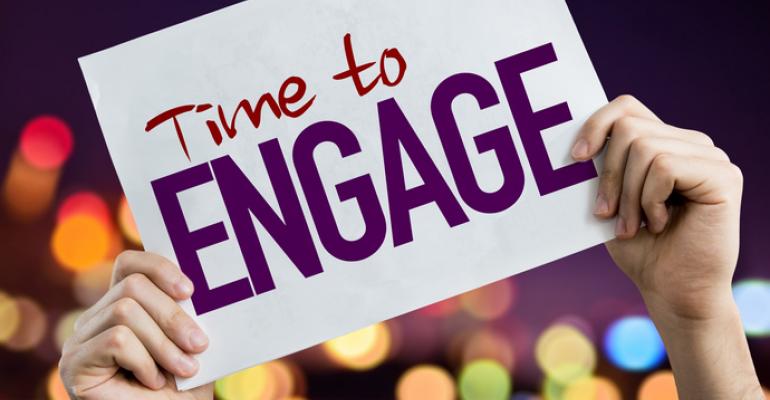One of a busy event professional’s important considerations is selecting speakers that will help drive registration and engage your audiences. Whether those speakers are celebrities, industry experts, thought leaders, or professional speakers for keynotes, breakouts, panels, short-talks, or emcee roles, their responsibility is to get (and keep) your audience’s attention, provide tangible takeaways, and inspire them to share their learnings with others.
I interviewed professional speakers and meeting planners to find out how speakers can elevate the education component of our meetings. Here are some of their suggestions:
Getting Attention: Start Strong
Laura Gassner Otting, a TEDx speaker who focuses on confidence, says the key is to have a strong introduction. Clay Hebert, a marketing strategist, speaker and crowd-funding expert, agrees, saying, “The audience decides in the first minute if they will give you their attention, so spend 20 percent of your opening minute capturing it with words, story pauses, and movement.” Christine Brandon, national sales and marketing coordinator with Atlific Hotels, adds, “If the audience feels like they know the speaker, they will be more comfortable with them and get more out of the topic.” One way to do that ahead of time is to ask speakers to write social media posts pre-conference so the attendees will become familiar with them.
Humor definitely helps, say the professionals. Speaker and TEDx Cambridge Performance coach Mike Ganino says, “In the first few minutes, grab attention with humor and share something specific to that audience.” Ron Tite, who believes stories are more powerful than data, adds, “Start with a warm opening joke that customizes something that just happened” to make it specific to the audience.
Scott Stratten, popular marketing keynote speaker and author of Unmarketing and Unbranding, opens by asking his audience, “Do you want me to explain the man bun now or wait until the end of my talk?” It always gets a laugh.
One example I witnessed was at the National Speakers Association annual winter conference when the co-chairs engaged John Garett, a clean comedian and emcee, to re-write every speaker introduction. The audience loved it.
Holding Attention: Change It Up
Once the speaker has the audience’s attention, the job becomes keeping their minds from roving. Jason Seiden suggests that “you fill every inch of the room with your energy and take 100 percent responsibility for the emotional connections you want for your audience.”
Here are some more tips on how to keep attention throughout the session:
• Change it up. Judson Laipply, an inspirational comedian and creator of the famous Evolution of Dance video, says, “Change is key to getting and holding attention. This includes your cadence, volume, emotional arcs, stories, content, and movement—especially audience movement.”
• Use silence. Podcaster, founder of digital agency Mirium, and marketing speaker Mitch Joel says adding silent moments strategically helps cut through the noise of a busy conference agenda and helps people center on the important messages.
• Set listening goals. Jill Scheifelbein, founder of The Dynamic Communicator and 2018 co-host of the NSA Influence event, says, “Set expectations for listening goals—remind the audience to listen for one thing”—that key message you want them to walk away with. This goes for speakers, moderators, and all meeting planners.
• Create visuals. Bill Cates, the “Referral Coach” and a popular speaker with financial services groups, emphasizes the importance of using state-of-the-art slides and b-roll video. Erin Gargan, speaker, and owner of Live Event Social Media Experts company Socialite Agency, agrees: “You are competing with people wanting to check their phones every 30 seconds—you need to use a new slide, gif, tweet, or b-roll.”
• Connect with your eyes. Senior Vice President of Edison Research Tom Webster shares that he heard magician Juan Tamariz say that he visualizes a literal connection between his eyes and the eyes of every single audience member. Making that personal eye contact can be a powerful attention-getting tool.
• Stay close. Speaker Stu Saunders says, “Walk close to the audience.” Speakers need to use the stage, not hide behind the podium.
More Audience Engagement Strategies
Not all the engagement has to come directly from the stage. In fact, the more audience members interact with speakers, each other, and the content, the better.
• Encourage social media sharing. Invite speakers to encourage attendees to use your conference hashtag when sharing online, ask questions during the event, and post photos of the room and selfies with seatmates. Also share brief videos from industry experts the audience will recognize and participate in Facebook Live events and tweet chats before the conference
• Design spaces for conversation. Jim Kelley, vice president of marketing and industry relations with PRG https://www.prg.com/, says, “Consider mixed seating options and be sure to include stand-up tables for your attendees.”
• Schedule connection points. Audience members will want to check their phones, catch up with friends they might only see once a year, and connect with the speaker. Don’t jam-pack your agenda—leave time for socializing.
What ideas would you add to this list?
Want more ideas on how to get and keep attention? Check out my latest book, Attention Pays.






